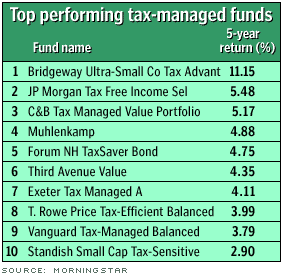
NEW YORK (CNN/Money) -
My husband and I have both maxed out the amount we can put into our 401(k) accounts, and our income puts us above the limits for tax-deductible IRAs and Roth IRAs. Any ideas about where we should be investing our money?
-- V. Smith, Austin, Texas
Let me start by telling you how nice it is to hear from people who are not only taking full advantage of their 401(k)s, but are actually looking for ways to save and invest more.
Considering that most Americans probably aren't saving nearly enough for retirement, it boggles my mind why our government chooses to shackle people with these absurd income limitations on IRAs and Roth IRAs. But, hey, I don't set the rules. I just try to help people do the best they can under the rules our politicians have set up.
Yes! You do have options
Fortunately, you do have a few options. First off, you can consider making nondeductible contributions to an IRA and, if your plan allows, your 401(k) as well. You won't save on taxes by lowering your taxable income as you normally do with your 401(k) or IRA contribution. But you will get a tax break in that your investment gains will grow free of taxes until you withdraw them, preferably in retirement.
Remember, though, 401(k)s and IRAs also have a tax disadvantage -- namely, capital gains that would normally be taxed at lower capital gains rates are taxed at higher ordinary income rates when they're withdrawn. It takes many years of tax deferral to make up for this little disadvantage.
Another option is a variable annuity. When you buy a variable annuity, you get to invest in anywhere from a half dozen to upwards of 20 stock or bond subaccounts, which are essentially mutual funds. As with nondeductible 401(k) and IRA contributions, you don't get an immediate tax break, but your gains in a variable annuity are sheltered from taxes until you withdraw them.
But variables have a several downsides as well. As with a 401(k) and traditional IRA, all your gains, including capital gains, are taxed as ordinary income when you withdraw them, which means you end up paying the higher ordinary income tax rate on capital gains. (Withdrawal penalties can also apply to early withdrawals from IRA and 401(k) accounts.)
| RELATED ARTICLES
|

|
|
|
|
There may also be also surrender charges levied by the annuity issuer if you pull out your money early on, plus many annuities charge annual fees that can really drag down your returns.
In general, I think annuities work well as payout vehicles -- that is, as a way to transform money in a 401(k), IRA or other account into an income that will last for life. But I'm less enthusiastic about them as ways to build wealth. To learn more about this option, I suggest you check out an earlier column I wrote on variable annuities.
Don't forget tax-managed mutual funds
Finally, one frequently overlooked option you might consider as part of your long-term investing strategy are tax-managed mutual funds. What distinguishes this breed of funds from regular funds is that the managers purposely try to minimize, if not eliminate, taxable distributions.

They do this in a variety ways. They may emphasize stocks with no or low yields to reduce taxable dividend income that must be passed along to fund shareholders. They may buy and hold securities to minimize taxable gains from trading. And tax-managed fund managers will also sometimes sell stocks for losses that they can later use to offset against taxable gains they've taken in other stocks.
The beauty of this strategy is two-fold. First, to the extent the fund can reduce or eliminate taxable distributions, you don't have to pay taxes on your investment gains on a year-to-year basis.
Second, when you eventually do have to realize the gains -- when, for example, you sell shares -- the gain is more likely to be a long-term capital gain, which gets taxed at the generally lower tax rates that apply to long-term capital gains.
So even though you don't get an immediate tax break as you do with regular contributions to your 401(k) or a deductible IRA, you shelter the bulk of your gains as long as they're in the fund and you get a more favorable rate when you sell.
In fact, this dual benefit -- ongoing sheltering of gains plus getting taxed at the capital gains rate -- may make this the best option of all, unless Congress changes the tax laws on us again, which is always a possibility.
Walter Updegrave is a senior editor at MONEY Magazine and is the author of "Investing for the Financially Challenged." He can be seen regularly Monday mornings at 7:40 am on CNNfn.

|

